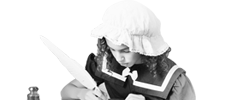‘High Sheriffs of Lancashire: 1523-1549’ by Colin Penny PhD
Part Four
Sir Alexander Radcliffe (1523, 1529, 1539, 1547): Born c 1476, Alexander was the son of John Radcliffe and Elizabeth Brereton. Following distinguished military service during Henry VIII’s second campaign in France, a highlight of which was his participation in the Battle of the Spurs (1513), he was knighted at Lille. He later returned to England where he pursued a civilian career with equal success; in 1542, as Sergeant of Salford, he raised troops for Henry VIII’s campaign in Scotland. Alexander was married to Alice Booth, and the couple had seven children: William (1502-1568), Alexander, John, Edmund, Anne, Elizabeth, and Eleanor (c.1512-c.1612). Alexander died c.1548, and was buried in Manchester Collegiate Church (Manchester Cathedral).
Sir William Molyneux (1524-1525): William was the son of Sir Thomas Molyneux (1445-1483), sheriff of Lancashire 1473-80, and Anne Dutton. He was born in about 1479, and was the eldest of seven children. In 1513 he distinguished himself at the battle of Flodden, during which he captured the standard of the Earl of Huntly, a trophy which was hung in Sefton Hall for the remainder of his life. William was married twice; his first wife was Elizabeth Clifton; his second, Jane Rugge. He fathered four children, the youngest of whom was Sir Richard Molyneux (1510-1568), who became sheriff of Lancashire 1566. William died on 16th March 1548.
Henry Farrington (1526 & 1531): The son of Sir Henry Farrington, he was the first to live at Old Worden Hall, which was purchased for him by his father in 1534; Old Worden Hall continued as the family home until New Worden Hall was built in 1715. He was sheriff a second time in 1531, otherwise his career is unknown.
Sir William Leylond (1526-1527 & 1540)): Very little is known of this individual, except that he came from Morley in Astley. His daughter was married to Henry Blundell, and it is possible that a Thomas Leylond, ordained into the ministry on 21st March 1544 at Chester Cathedral, was his son.
Sir Alexander Osbaldstone (1528): From Osbaldstone. Unknown.
Richard Assheton (1530): Born in 1482, and of Middleton Hall. Richard mustered a considerable contingent of local bowmen for service against the Scots in 1513, and fought at the battle of Flodden. He is often known as the ‘hero of Flodden’; he led his Middleton bowmen in one of the decisive actions of the battle, and took prisoner, among others, Sir John Forman (Serjeant Porter to King James IV), and Alexander Barrett (High Sheriff of Aberdeen). He was knighted for his services in the battle. Like a number of his fellow aristocrats, on his return, Richard dedicated his armour in the family chapel of his local church, St Leonard’s, where is brother, Edmund, was rector, and set about its rebuilding. Of particular interest was his ‘Flodden window’, which depicted both himself, his wife (Anna), and the Middleton bowmen.
Sir John Towneley (1532): Born 1473, John was the son of Sir Richard Towneley (d.1482) and Jane Southworth. In 1497 he took part in the Scottish wars and was knighted on 30th September by Thomas, Earl of Surrey. His first wife was Isabel Pilkington (died 1522), through whom he acquired lands at Gateford, Nottinghamshire. The couple produced two sons (Richard and Charles), and six daughters. Following his wife’s death, John had a long-term liason with Elizabeth Foljambe, with whom he fathered four children, but in 1531 married Anne Catterall. John appears to have been astute, and added considerably to the Towneley estate during his lifetime; he also either built, or rebuilt, a number of churches and chantires. John died in 1540, and despite the religious upheavals of the time remained true to his Catholic faith to the end.
Sir Edmund Trafford (1532-1533): He was created a knight on his appointment as High Sheriff. He was married to Anne Radcliffe, the daughter of Sir Alexander Radcliffe (High Sheriff 1523, etc). He was the father of Sir Edmund Trafford (1526-1590).
Sir Thomas Langton (1534): Baron of Newton-in-Makerfield. By the time of his death, Thomas had amassed a considerable estate amounting to 27,000 acres of land and 600 houses; he was also MP for the borough. His son, Leonard, predeceased him, and the estate fell to his grandson, Thomas (died 1605).
Sir Thomas Boteler (Butler) (1535): Of Bewsey, the son of John Butler and Margaret Stanley. Thomas married Margaret Delves, and the marriage produced three daughters – Margery, Isabel, and Elizabeth. He is recorded as being in Greenwich on 24th May 1533, prior to the coronation of Anne Boleyn.
Thomas Shireburne (1536): Of Aighton and Mitton. He was married to Joan, the daughter of John Towneley. Thomas died during his year of office.
Hugh Adlington (1536): Of Adlington and Duxbury. Unknown.
Sir Thomas Halsall (1537): Knighted at the coronation of Anne Boleyn, he was married to Jane Stanley, through whom he acquired the estate of Melling, and produced an heir, Henry Halsall (born 1521). Thomas was High Sheriff of Chester in 1541-2 and 1546-7.
John Holcroft (1538 & 1543): Of Holcroft, near Warrington. John was knighted at the coronation of Edward VI (1547). He married Margaret Massey, and fathered, Thomas (High Sheriff 1546-1546), John and Margaret Holcroft.
Sir Richard Hoghton (1541): Career unknown.
Sir Thomas Southworth (1542): Born in 1497, he was the son of John Southworth and Helen Langton. He was present at Flodden in 1513. He married Margery Boteler (Butler), and was the father of Sir John Southworth (1526-1595). He died on January 13th 1546.
Sir Marmaduke Tustall (1544): Born 1507, at Thurland Castle. He was the son of Thomas Tunstall (killed at Flodden, 1513) and Isabel Boynton. He married Maria Scargill (born 1510), through whom he acquired the title Lord of Scargill. He was knighted at the coronation of Anne Boleyn (1st June 1533); loyal to the Reformation, Marmaduke was given the duty of administering the estates of Furness Abbey following the Dissolution. He also served as Constable of Lancaster Castle 1553-1556. He had a son, Francis Tunstall, who succeeded him as Constable, and a daughter, Ann. Marmaduke died on the 26th March 1558.
Sir William Norris (1545): Born c.1500, the son of Henry Norris. He was knighted between 1530 and 1535, possibly, like a number of the northern gentry, at the coronation of Ann Boleyn (1533). William appears to have been something of a scholar, and on his return from Lord Hertford’s campaign in Scotland (1544), is said to have plundered only books. His other military exploits included the battle of Pinkie Clough (1547); he was MP for Liverpool in 1554. He died on 30th January 1568, and is buried at Childwall. He had a son, Edward (born 1539).
Sir Thomas Holcroft (1546): Born 1505, at Vale Royal, Cheshire. He was the son of John Holcroft (High Sheriff 1538) and Margaret Massey. Thomas married Juliane Jennings, and had a son (Thomas), and a daughter (Isabel). He served in a considerable number of offices, including bailiff for the duchy of Lancaster (1536-45), receiver for Lancashire and Cheshire (most of the period between 1538-58), esquire of the body (1540), and knight marshal (1556-1558); he was knighted in May 1544. He was close to the 3rd Earl of Derby, and was appointed by Thomas Cromwell to assist the commissioners for the Dissolution in Lancashire. Astute by nature, he was able to exploit his position for his own personal gain, and is known to have amassed a considerable amount of money and land. He was also entrusted with a number of delicate diplomatic missions; most notably to James V of Scotland (1535), and Queen Margaret (1536). Other adventures include his employment as an English spy in Scotland (1548-9), and his participation in the Scottish campaigns of 1542 and 1547. Undoubtedly a man of talent, Thomas also owed much of his success to his ability to read which way the wind was blowing. Despite finding himself arrested (notably in 1551-2, and possibly in 1558), he always managed to ally himself, ultimately, with the winning party during the many political crises of the period – able to serve Henry VIII, Edward VI and Mary I with (almost) equal success.
Sir Thomas Gerard (1548): Born c.1512 at Brynn. He was the son of Sir Thomas Gerard (c.1488-1523) and Margery Trafford (possibly the sister of the High Sheriff of 1532-33). Career unknown, but he was the father of Sir Thomas Gerard (High Sheriff 1553 and 1557-8).
Sir Robert Worsley (1549): Career unknown, but he fathered a son, also named Robert.








